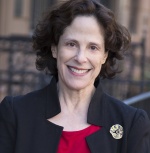 Most Funders Don’t Think About Disaster Until It Strikes
Most Funders Don’t Think About Disaster Until It Strikes
A message from PNY President Ronna Brown, published originally in the New York PhilanthroPost Monthly July 2016 edition.
Whether it is an attack on Orlando or a natural disaster like the one currently affecting West Virginia, our first reaction is to determine how we can best help those impacted. Our second thought is often: How can we be prepared in our own community? Let’s look at both reactions.
How to Help: PNY’s approach is to help members find the most effective way to connect with those in the local community and, often, to identify long-term needs after the initial flurry of support. For both Orlando and West Virginia, funders can help those impacted by working with the nonprofits listed when you click on the hyperlinks.
How to Prepare: How to be better prepared to respond to a disaster in the future is a complicated question with no single answer. There are resources, however, to help funders start to prepare their own communities.
For both natural and man-made disasters, a good place to start is with The Disaster Philanthropy Playbook, a new resource to help communities prepare for, withstand, and recover from major disasters by including a compilation of philanthropic strategies, best practices, and lessons learned that have saved and galvanized local economies, nonprofits, and vulnerable populations from entering into a permanent downward spiral in the wake of a disaster. The Playbook is a joint project of the Center for Disaster Philanthropy and the Council of New Jersey Grantmakers in association with the Forum of Regional Associations of Grantmakers and with support from the Rita Allen Foundation
“As natural disasters become all too common, the entire social sector needs the tools to focus its work for maximum effect,” said Bob Ottenhoff, President & CEO of the Center for Disaster Philanthropy. “The Playbook ensures we are not only learning from each other, but also putting those learnings into smarter, more targeted strategies.”
The TV images after a disaster often focus on water bottles and blankets – but the needs of communities after a disaster go far beyond those first days and basic needs. The Playbook helps funders understand the range of needs and offers tested response strategies in the following areas:
- Advocacy, Legal Aid & Public Policy
- Aging & Disabled Populations
- Animal Welfare
- Arts & Culture
- Community & Economic Recovery
- Communication Networks
- Education
- Employee Support
- Environment
- Health & Behavioral Health
- Housing
- Immediate Relief / Individual Support
- Mitigation & Preparedness
- Product Donations
The suggestions in the playbook are similar to what we learned from the philanthropic response to Hurricane Sandy, and the earlier lessons New York funders learned from their response to the Gulf Coast storms. After Sandy, we saw an impressive and historically quite large philanthropic response. And, while it was only a fraction of the hundreds of billions of dollars was allocated by government, we clearly saw how critical private philantrhropy’s role was.. “Philanthropy & Hurricane Sandy: A Report On the Foundation & Corporate Response,” published in 2014, made the case that how philanthropic dollars were allocated absolutely matters.
We see it over and over – after a disaster of any kind, we want to react quickly. What we have learned – and which is now well-documented – is how we best help starts with being prepared. It’s our job to prepare in advance by learning the lessons from past disasters and being prepared to step up if and when we are called upon to do so.
